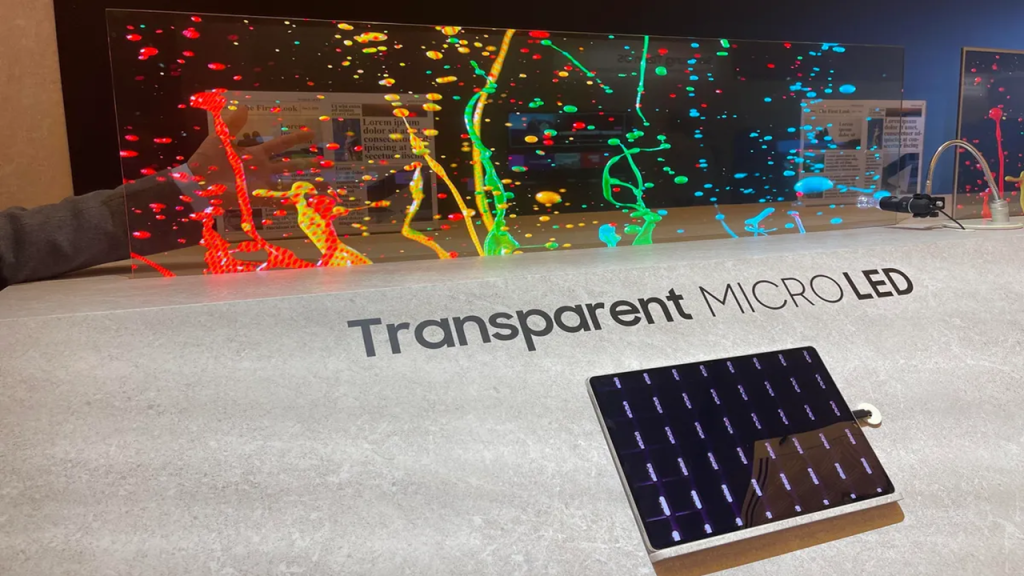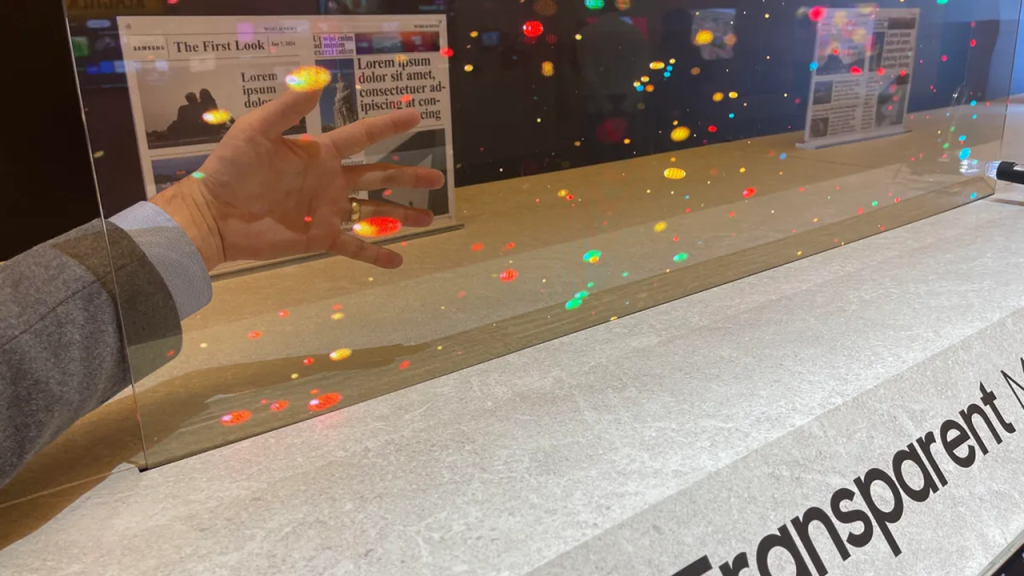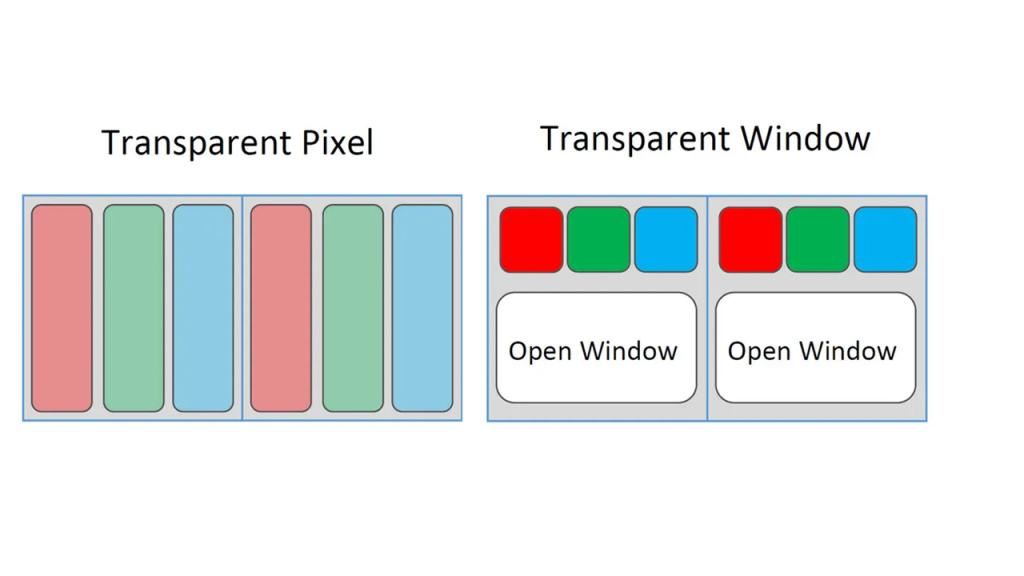Transparent TV:

Imagine having a TV in your living room that looks like a piece of glass when it’s off but comes to life with vibrant colors and images when you turn it on. It sounds like something out of a sci-fi movie, right? Well, transparent TVs are no longer just a futuristic dream. Thanks to companies like LG and Samsung, these amazing devices are real, and you might even be able to buy one soon. But how do they work? Let us explore it in simple terms.
The Magic Behind Transparent TV:
Transparent TVs can display images just like a regular TV, but you can see right through them. When they’re off, they blend into the surroundings, almost like they’re part of the furniture. It’s a fascinating blend of technology and design that makes these TVs so unique.
How Do Transparent TVs Work?
To understand how transparent TVs work, let’s start with the basics of how any TV displays an image.
Wiring and Addressing Pixels

Each pixel needs to be told when to light up and what color to be. This is done using tiny wires that send electrical signals to the pixels. You can think of it like a giant game of Battleship, where the TV’s processor says, “Light up pixel E6,” and that pixel lights up.
Challenges of Making a Transparent TV
The big challenge with transparent TVs is that neither the pixels nor the wires are naturally transparent. They are usually opaque, meaning you can’t see through them. So, how do we make them see-through?
Making Pixels Smaller and Brighter
To allow light to pass through the TV, the pixels need to be very small and very bright. This way, even though they are there, they take up less space, allowing more light to pass through the gaps between them.
Transparent Wires
Traditional wires are made of materials like copper or aluminum, which are opaque. For transparent TVs, a special material called indium tin oxide is used. This material allows electricity to pass through while being mostly clear.
How Transparent TVs Are Put Together

\With the transparent pixels and wires in place, the rest of the TV’s components, like circuit boards and inputs, need to be arranged in a way that doesn’t block the view. This can be done by placing these components below the screen or in a separate unit connected by a cable.
Viewing Experience with Transparent TVs
Transparent TVs look almost like magic, but they do come with some trade-offs.
Clear-ish, Not Completely Clear
Transparent TVs are not perfectly clear. If you look closely, you can see the tiny pixels and the gaps between them, similar to looking through a screen door. From a distance, the image looks smooth and see-through, but up close, you can see the structure.
The Black Problem
One of the biggest challenges is displaying black. Normal TVs can show deep blacks by turning off pixels, but a transparent TV can’t “create” black. Anything that’s supposed to be black will be clear, which can make watching dark scenes a bit tricky.
Practical Uses of Transparent TVs
While having a transparent TV in your home sounds cool, these devices are likely to be quite expensive and might only be affordable for the ultra-rich for now. However, you’ll probably see them in various commercial settings soon.
Commercial Uses
- Advertising: Transparent displays can show ads while still allowing you to see the product behind the screen.
- Teleconferencing: Imagine a video call where the person appears to be floating in the air.
- Information Displays: These can be used in stores, museums, or even on car windows to provide additional information without obstructing the view.
Pixels: The Building Blocks of TV Images
Pixels are the tiny dots that make up the images on your TV screen. Each pixel can emit light and color to create the overall picture you see. In most modern TVs, there are millions of these pixels working together.
Types of Pixels in TV:

- OLED (Organic Light Emitting Diode): These pixels are made up of organic materials that light up when electricity passes through them.
- MicroLED: Similar to OLED but made from different materials. These pixels are incredibly small and bright.
- LED LCD (Light Emitting Diode Liquid Crystal Display): This is the most common type of TV, but it’s not used in transparent TVs, so we won’t focus on it here.
Transparent TVs are an exciting advancement in technology. They combine the latest in display tech with innovative materials to create something that looks like it’s straight out of a science-fiction movie. While they might be out of reach for most of us right now, it won’t be long before you start seeing these incredible devices in stores and public places. They might not be perfect yet, especially when it comes to showing blacks, but the potential applications are endless. Whether used for advertising, teleconferencing, or simply as a high-tech piece of home decor, transparent TVs are sure to amaze and inspire.
So, the next time you’re watching a sci-fi movie and see a transparent screen, remember that this technology is real and could be coming to a store near you sooner than you think.